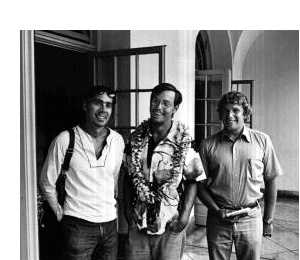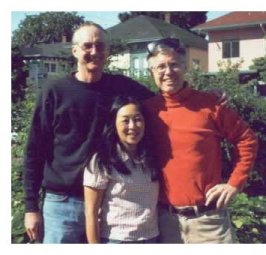

|
| weblog/wEssays | home | |
|
Is the Web a Giant Copy Machine? (March 4, 2006) My old friend and AFSC/People's Party of Hawaii mentor/comrade Jeff Blair has created a compelling and novel way to understand the Web: as a global copy machine. Here are excerpts from Jeff's academic paper on the subject, Using Images Posted on the World Wide Web. It is not surprising that many people still think about the use of images on the World Wide Web as if they were images in a book. The Web, however, is not just a super-sized digital library. It is also a copy machine. (emphasis added)In essence, what Jeff is proposing is a new understanding of digital sharing, community and rights. If you post a photo on the Internet, you are de facto granting other users the right to print or otherwise use that image--to make a copy, so to speak, on the global copy machine. This concept has broad-reaching intellectual-property rights and technology implications. Is it fair that someone could copy your photo, modify it (or not) and then sell the copies (on T-Shirts, for instance) for commercial gain? Obviously it is not. Yet demanding that every user obtain legal permission to print your photo on his/her home inkjet printer for their own enjoyment is impractical and as Jeff notes, impossible to enforce. As Jeff wrote in a recent email: My feeling is that giving access is defacto permission to make direct links and make personal copies (without publication or posting on other websites--although, practically speaking, these infractions would be difficult, maybe impossible to enforce).From one point of view, then the solution is straightforward: if you don't want others to use an image, or direct a URL to it on the Web, then don't post it on the Web. Yet this would deprive many people of the enjoyment of viewing images which the vast majority of users have no intention of using for commercial gain. Furthermore, is it "copying" if someone posts a link to your image on their website? If it is a free site, is this OK? But what if it is a commercial site which charges "admission"? While I am only a technological neophyte (though I do know about ./etc and stuff like that), I foresee the solution being technological rather than legal in nature. New commands (i.e. controls) could be written into a future version of HTML by the W3C which would enable or block copying the image from a browser. These controls could then be embedded in the IMG SRC tags of HTML by the creator. If you wanted to block copying of an image, you'd simply add a command to the IMG SRC tag much like you add an ALT command now. It may even be possible to add commands which would enable or disable URL links to images from outside websites. I don't know enough about the inner workings of HTML to speculate beyond these possibilities. It's also possible that a new image compression tool could be coded (like PNG is supposed to replace JPG) such that copies would carry a digital watermark which would destroy the image when printed. There is already digital watermark software, but enabling this feature in the compression protocol itself would simplify the process. I think the "global copy machine" is a fascinating and profound idea, and I recommend you check out the full paper at the link above. Just to show you how far back Jeff and I go, the photo on the right (courtesy of Ian Lind) is from the early 70s, circa Jeff's resistance/arrest/court battle/acquittal against the Selective Service system. Jeff is in the middle, just to the left (physically, if not figuratively) of famed activist Jim Albertini. The photo on the left is from Jeff's visit to Berkeley a year or so ago. 

copyright © 2006 Charles Hugh Smith. All rights reserved in all media. I would be honored if you linked this wEssay to your site, or printed a copy for your own use. |
||
| weblog/wEssays | home |